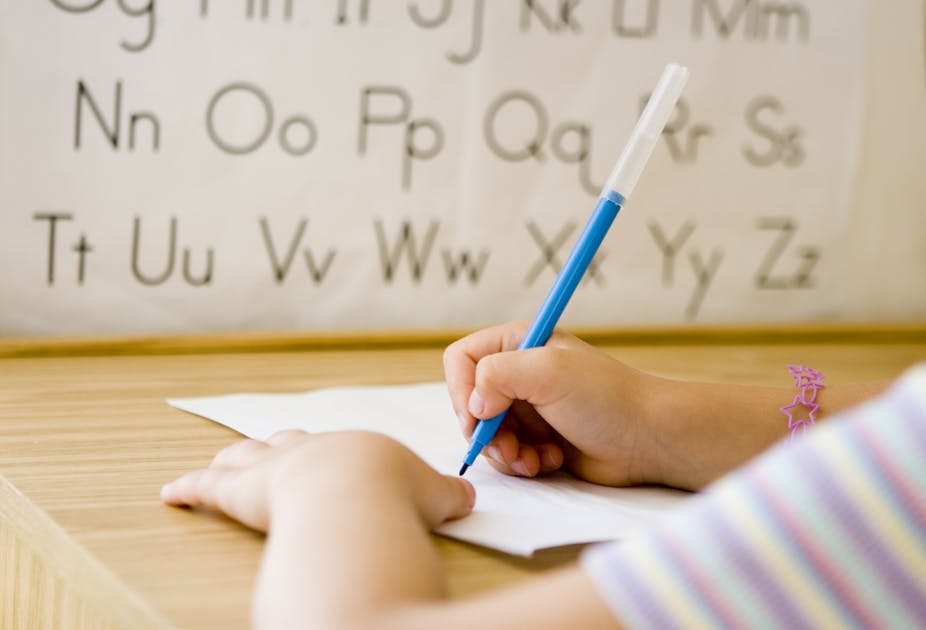Students across Australia in Years 3, 5, 7 and 9 are currently sitting for the National Assessment Program – Literacy and Numeracy (NAPLAN) tests. These tests are supposedly designed to identify whether students have the “literacy and numeracy skills that provide the critical foundation for their learning, and for their productive and rewarding participation in the community.”
However, there are a number of serious concerns about NAPLAN, including causing health problems such as stress, anxiety, as well as vomiting and sleeplessness. NAPLAN has also been criticised for encouraging teaching to the test, the promotion of supplements, narrowing the curriculum and manipulation and cheating by schools.
Given these growing concerns about the impacts of NAPLAN, it is important to consider just what this expensive standardised literacy testing program actually measures.
Testing the ability to do tests
Just as I.Q. tests do little more than test someone’s ability to do an I.Q. test, NAPLAN primarily measures students’ capacity to effectively sit NAPLAN tests.
Students as young as seven are made to sit in a room up to twice a day over three days, 40 minutes at a time and use pencil and paper to complete tests with about 40 questions on them. These tests are broken into reading, writing, language conventions (spelling, grammar and punctuation) and numeracy.
The nature of the tests as one-size-fits-all means that the diverse social and cultural differences of students are ignored, while different learning styles and ways of knowing and understanding are stymied. The tests have also been criticised of having an Anglo-Australian bias that privileges white, middle class world views.
It seems nonsensical that pencil and paper tests conducted in a couple of hours over three days can even begin to measure the complexities of literacy learning and knowledge of our young people. Yet, each May since 2008, this is exactly what the Australian government has attempted to do.
Further, despite being touted as a useful diagnostic tool for schools and teachers, there are limited benefits to improving literacy outcomes for students when the test results are released in October, five months after students have sat them. Anyone who has ever raised or taught young children will know that five months is a lifetime in the learning development of children.
More than reading and writing
The version of literacy valued by pencil and paper tests is one that fits with a skills-based traditional approach to learning, which has limited relevance in the lives of young people today. Reading, spelling, grammar, punctuation and writing are necessary and important skills, but they fall well short of the range of skills and knowledge needed for young people to thrive as literate citizens in today’s information and media rich environment.
A large amount of research has been done into new literacies over the past couple of decades. These new literacies make use of new communication technologies, such as the internet, portable computing and mobile phones, along with visual and critical literacy, gaming, art, film, drama and music.
There is enormous potential in these new literacies for young people to engage in meaning making that is critical and creative. Continuing to privilege pencil and paper testing of reading and writing makes little sense when the lives of young people involve much more complex ways of communicating and accessing information through a wide variety of media.
Music as literacy?
One growing area of interest is in the intersection of music and literacy. Music has long been accepted as an important feature in the lives of young people, with popular music and youth culture intertwined since Bill Hayley and the Comets released “Rock Around the Clock”. Less known are the deep connections of music and language, and the capacity for music to act as a vehicle for literacy learning.
There are obvious links that can be made between song lyrics and language, but less obvious are the other links to learning, where music develops auditory and metacognitive processes through singing, rhyme, rhythm and percussion. A simple example of this is through mnemonics such as the alphabet song, where pitch and rhythm work together to trigger linguistic cues.
Music links to reading in ways that we are only beginning to understand. Motivation, cueing and comprehension are all aided through music. In other words, if we want to improve our students’ reading and writing skills, we should get them singing more.
This is the kind of innovative teaching that should be done in schools to build up literacy skills in students. But with tests like NAPLAN increasingly dominating the school day and encouraging teachers to teach to the test, will there be any room left? Perhaps if NAPLAN could measure singing then things would be very different.

